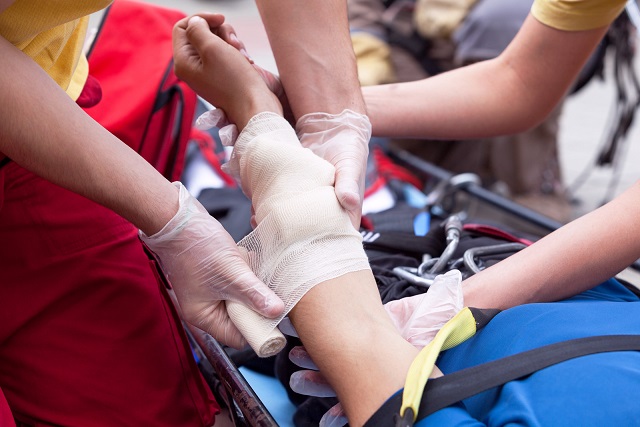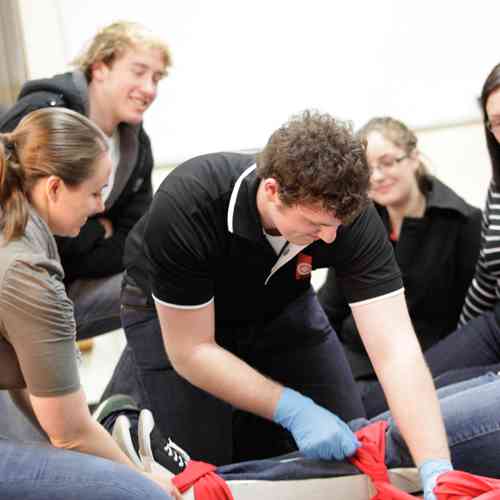Introduction
In today's unpredictable globe, recognizing how to react throughout emergency situations can make the difference between life and fatality. Whether it's an unexpected clinical case, an accident in your home, or a health and wellness dilemma in a public room, having the right skills can save lives. Get In Emergency Treatment and CPR programs-- your vital toolkit for emergencies. These courses gear up individuals with the expertise and methods needed to handle different situations effectively.


This comprehensive overview will look into every little thing you require to understand about First Aid and CPR programs, covering their relevance, what they involve, how to obtain licensed, and a lot more. So distort up; we're about to start an informative trip that might prepare you for real-life emergencies.
What Are Very first Aid and CPR Courses?
First Help and mouth-to-mouth resuscitation programs offer important training on just how to reply to medical emergency situations efficiently.
Understanding Initial Aid
- Definition: Emergency treatment is the immediate assistance provided to someone suffering from an illness or injury until expert medical assistance arrives. Key Components: It consists of analysis of the circumstance, stablizing of the client's condition, and carrying out needed interventions.
Importance of CPR (Cardiopulmonary Resuscitation)
- Definition: Cardiopulmonary Resuscitation (CPR) is a lifesaving technique used in emergency situations when somebody's heart beat or breathing has actually stopped. When It's Needed: Instances consist of heart attack or near-drowning incidents.
These courses combine practical skills with academic knowledge, guaranteeing individuals not only comprehend what to do however additionally why those actions are essential.
Why Must You Sign up in a First Aid Course?
Real-Life Application of Skills
The main reason anyone ought to think about registering in a first aid course is the prospective real-life application of these skills. Picture seeing a person collapse due to a cardiovascular disease; understanding just how to perform mouth-to-mouth resuscitation can be life-saving.

Boosting Self-confidence in Emergencies
Taking part in these training courses aids build confidence. When confronted with an emergency scenario, having https://writeablog.net/coenwiegoh/cpr-courses-near-me-sign-up-with-a-lifesaving-neighborhood-today-mxln actually undertaken correct training can alleviate panic and boost decision-making.
Increased Employability
Many companies now try to find candidates that possess an emergency treatment certificate. Whether you're in healthcare, education and learning, and even company fields, having this qualification can give you an edge over various other applicants.
Components of First Aid and CPR Courses
Basic Life Support (BLS)
- Emphasis on preserving efficient breathing and circulation. Techniques such as chest compressions and rescue breaths are practiced extensively.
Choking Management
- How to acknowledge choking symptoms. The Heimlich maneuver and back blows are shown as critical techniques for displacing an obstruction.
Wound Care
- Understanding different kinds of injuries (cuts, scratches). Techniques for cleaning up wounds and using dressings appropriately.
Recognizing Medical Emergencies
Participants learn how to determine indicators of different clinical problems such as:
- Heart attack Stroke Seizures
How Do You Get Qualified? A Step-by-Step Guide
Choose a Reliable Institution- Look for companies approved by identified bodies like the American Heart Association (AHA) or Red Cross.
- Decide whether you desire fundamental emergency treatment training or innovative options like Advanced Cardiovascular Life Assistance (ACLS).
- Most organizations use on-line registration for convenience.
- Participate proactively in both concept and functional sessions to make certain detailed learning.
- A created test combined with useful analyses usually figures out qualification eligibility.
- Upon effective completion, you will obtain your certification legitimate for a specified period (normally 2 years).
Types of First Aid Rushes Available
Standard Emergency treatment Course
Aimed at general public individuals; covers necessary abilities applicable across various scenarios.
Advanced Emergency treatment Course
Designed for those looking to gain deeper understandings into clinical emergency situations; ideal for experts working in risky settings like building sites or medical care facilities.
Youth Programs
Tailored specifically for kids aged 12-- 17; concentrates on age-appropriate scenarios they may experience at institution or home.
CPR Certification: What You Need to Know
Duration of CPR Courses
Typically ranges from 2-- 4 hours depending upon the organization offering them. Some places also offer on-line choices that enable you to discover at your very own rate complied with by hands-on technique sessions.
Certification Validity Periods
Most certifications must be renewed every 2 years via refresher courses. This makes sure that your abilities remain appropriate and updated according to current guidelines.
Common Misconceptions About First Aid and CPR Training
Myth 1: "I Do Not Need Training; I Can Just Call 911"
While calling emergency services is essential, knowing fundamental first aid methods while waiting can significantly improve outcomes for patients experiencing medical crises.
Myth 2: "Only Medical Professionals Required Qualifications"
Not true! Anyone can take advantage of taking first aid programs-- moms and dads, educators, trains-- all play important roles where emergency situation situations might arise.
FAQs About Emergency treatment and CPR Courses
FAQ 1: What Is Covered in a Basic First Aid Course?
A standard emergency treatment course generally covers topics such as injury treatment, allergic reaction administration, choking assistance techniques, recognizing indications of heart attacks/strokes/seizures amongst others.
FAQ 2: Do I Need Any Kind Of Previous Experience?
No prior experience is necessary! These courses are created for beginners that desire foundational understanding concerning reacting properly during emergency situation situations.
FAQ 3: The length of time Does It Require To Complete A Course?
Completion times vary based on layout selected yet generally range from a number of hours up till one complete day relying on deepness covered within program scope!
FAQ 4: Exists An Age Requirement For Participants?
Most organizations enable individuals aged twelve years of ages & & over participate securely provided they possess parental approval if under eighteen!
FAQ 5: How Often Must I Restore My Certification?
Certifications generally end after two years so intend ahead appropriately Look at more info when scheduling refresher classes!
FAQ 6: Will certainly I Receive A Physical Certification After Completion?
Yes! Upon efficiently finishing all requirements Go to this website outlined within selected program-- consisting of assessments-- pupils earn their official first aid certificate!
Conclusion
First Help and mouth-to-mouth resuscitation courses are important devices that everyone need to think about including in their capability. The ability to act decisively throughout an emergency situation not only adds positively in the direction of conserving lives but also equips people with confidence while navigating unexpected situations. With various training course offerings offered customized specifically in the direction of various target markets ranging from newbies up till seasoned experts looking refreshers-- there's genuinely something around matched just right!
So don't wait any much longer; enroll today! Outfit yourself with this crucial toolkit since when it boils down conserving lives-- every second counts!